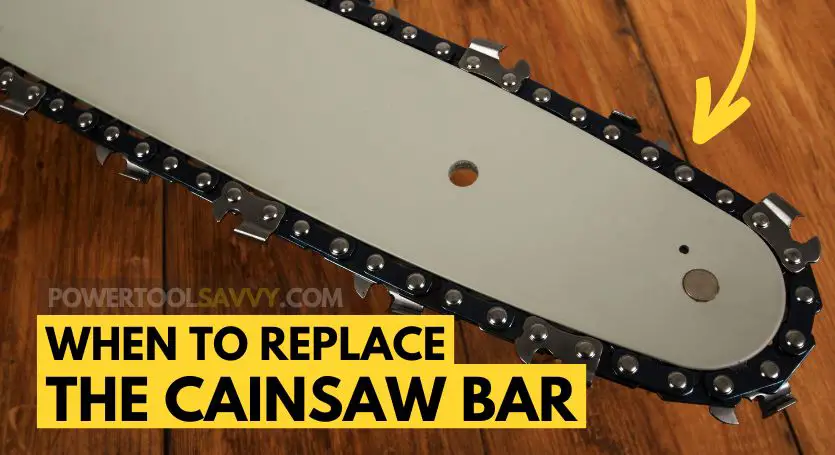
Let’s be real:
Chainsaw bars can take a beating, but they can’t last forever. Sooner or later, you’ll have to trade in that old, beat-up bar for a shiny new one!
So, how long does a chainsaw bar last?
Table of Contents
ToggleHow Long Does a Chainsaw Bar Last?
A good quality chainsaw bar can last about 5-10 years, depending on how often it’s used and how well it’s maintained. But if you are a professional logger or use your saw regularly, the lifespan of your bar may decrease to 3-4 years.
| Usage | Estimated Lifespan of Bar |
|---|---|
| Heavy (Professional Logger) | 3-4 years |
| Regular | 5-7 years |
| Light | 10 years |
| Occasional | 10+ years |
I recently posted a poll in our Facebook group (CHAINSAW REPAIR), asking folks how long their last chainsaw bar lasted.
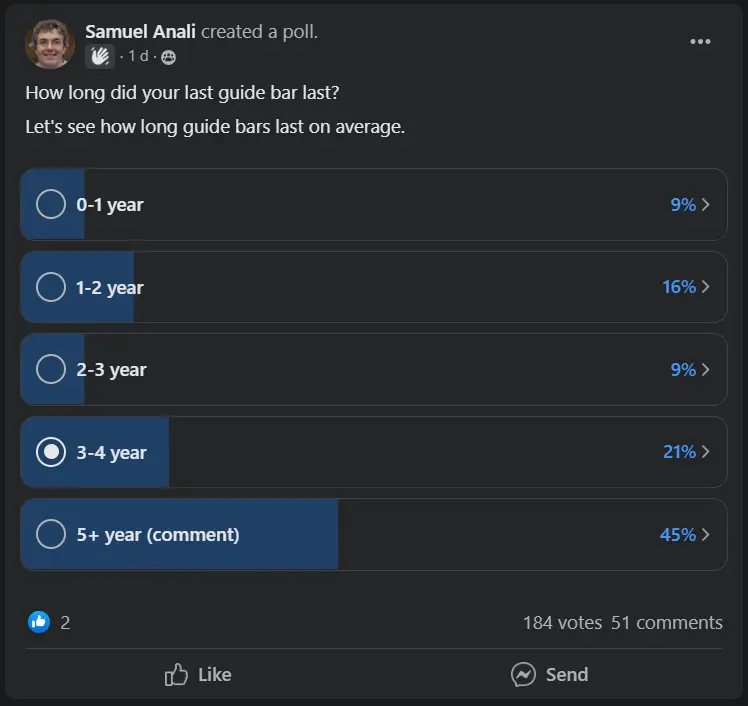
21% shared that their last chainsaw bar put in a good 3-4 years.
But the real champs? A solid 45% claimed their bars held up like champs, lasting between 5-10 years! Impressive, right?
Factors that Affect the Lifespan of a Chainsaw Bar
Nailing down the “exact” lifespan of a chainsaw bar? Well, that’s a bit of a challenge!
Why, you ask? Because there are a ton of FACTORS in the mix, each playing a role in determining just how long that bar is going to stick around.
For example –
Bar type & quality: A brand-new bar will obviously last longer than a used, low-quality, laminated bar.
Maintenance: Proper oiling, maintaining, and taking good care of your bar play a huge role in its longevity.
Usage: The more you use your saw, the faster the bar will wear out.
The type of wood you cut: If you mostly cut hard, dense wood like oak or hickory, your bar will wear out faster compared to cutting softwoods like pine or cedar.
Repairability: Chainsaw bars can often be repaired or have parts replaced, which can further prolong their lifespan.
How you define “worn out”: Everyone’s got their own take on it. For some, it’s when the bar is bent beyond salvation; for others, it’s when the paint’s chipping away.
When to Replace Your Chainsaw Bar?
Most people don’t know when it’s time to replace their bar.
Some decide it’s time for a change just because the paint has faded or there are a few scratches, while others stick with worn-out bars to save a buck.
And honestly, neither of these approaches is spot-on!
Here are 5 SIGNS that you need to replace your bar: 👇
Your Bar is Bent
If your bar is bent, there’s no way around it – you need to replace it!
A bent bar can cause your saw to cut at an angle (instead of straight), which leads to uneven cuts and makes it hard to control the saw.
On top of that, it can cause the chain to catch, jump off, or break, and cause serious damage to the saw itself.
“But Sam, how do I know if my bar is bent?“
It’s easy!
Just lay it on a flat surface and see if there are any gaps between the bar and the surface. If there are, then your bar is definitely bent.
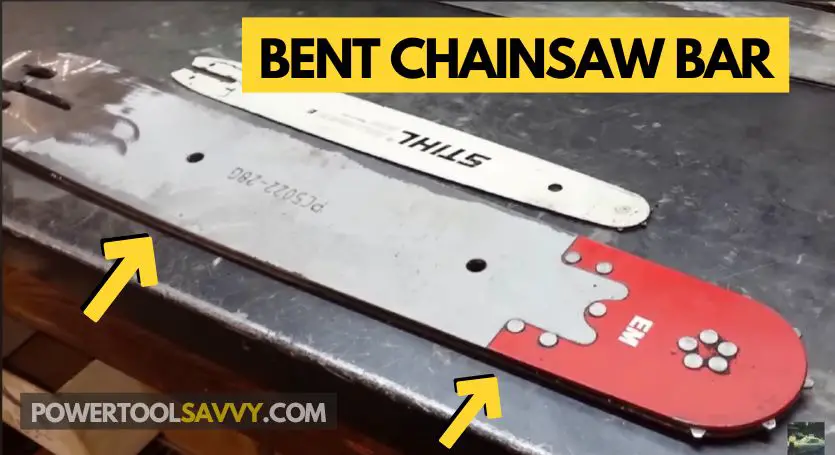
Also, try holding your bar at eye level and look down the length of it. If you see any noticeable curves or bends, it’s time to toss that bar and get a new one.
The Groove on Your Bar has Become Wider
Another surefire sign that it’s time to replace your chainsaw bar is when the groove (or channel) that the chain runs through has become wider.
This groove is what guides the chain and keeps it in place. But when it becomes too wide, the chain will start wiggling side-to-side & can easily slip off.
For example, here’s a 50 gauge bar that has worn down to a 58 gauge, which is too wide for the chain to grip onto: 
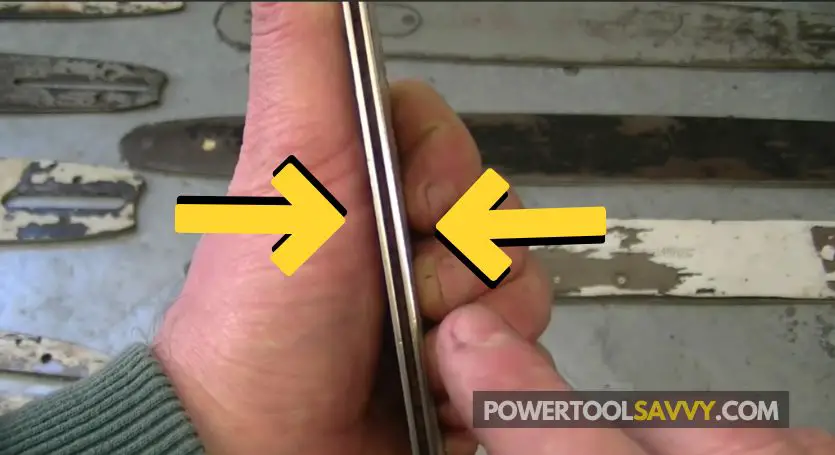
But how do you know if your bar groove has become too wide?
Well, measure the width of the groove using a gauge tool and compare it to the gauge written on the bar.
If there’s a significant difference, it means the bar groove has become too wide for your chain!
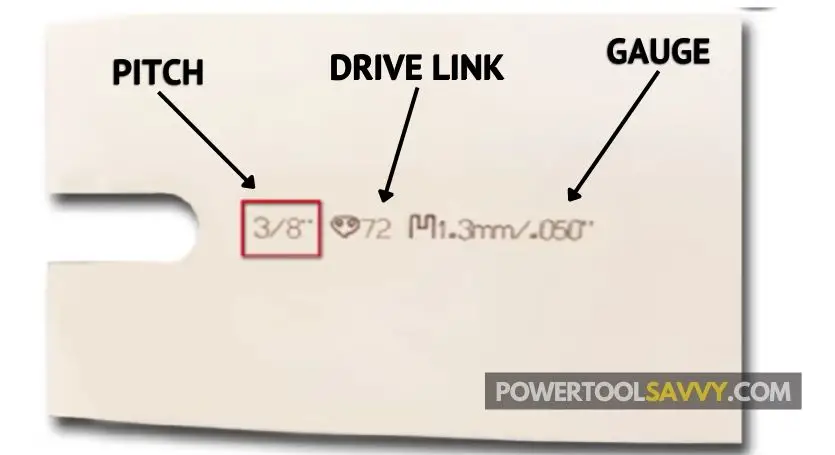
The Bar Rails are Worn
In addition to the groove, you also need to pay attention to the rails on your bar. These are the raised edges that guide the chain & keep it aligned while cutting.
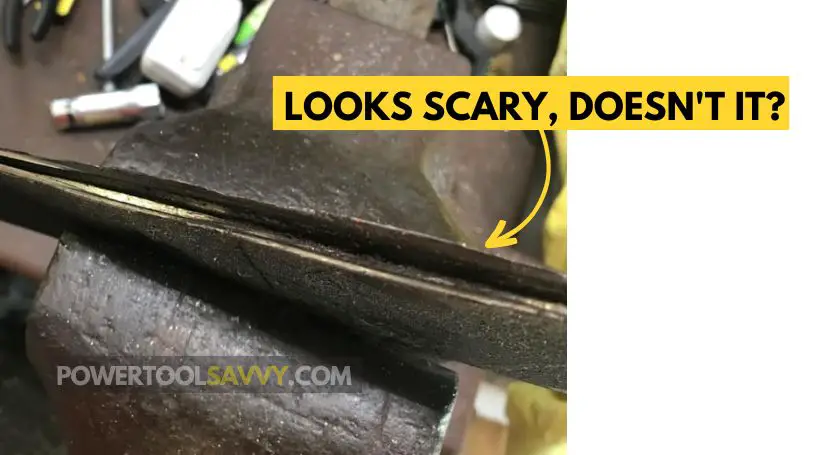
Over time, these rails can become worn down from friction, reducing the groove depth. This, in turn, leaves less space for the drive links to sit in.
And when the groove depth becomes too shallow, the tips of the drive links make contact with the bottom of the groove, resulting in a decrease in the chain speed & overall performance of your saw.
But how do you confirm that the bar rails are worn?
Well, you can do that by measuring the groove depth of your bar using a gauge tool.
If the groove depth is less than the “minimum” required for your chain, it’s time to replace the bar.
Here’s a table showing the minimum groove depth for different chain pitches: 
| Chain Pitch | Min. Groove Depth Required |
|---|---|
| ¼” P | 4 mm |
| ¼” | 4 mm |
| ⅜”P | 5 mm |
| .325” | 6 mm |
| ⅜” | 6 mm |
| .404” | 7 mm |
Your Bar Nose Sprocket is Jammed or Broken
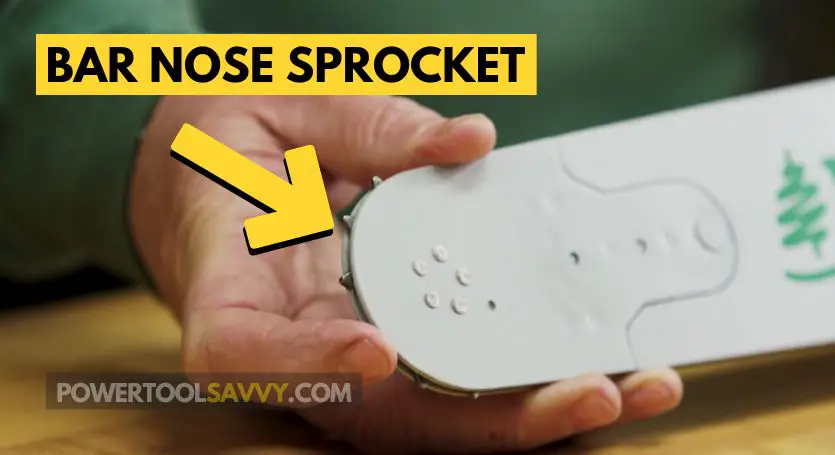
The nose sprocket is responsible for helping the chain move smoothly around the tip of the bar.
If this sprocket on your bar isn’t freely rotating or if any of its teeth are broken, it’s time for a new bar.
It can happen due to various reasons, for example –
- Getting the bar pinched multiple times (Read this article to save your chainsaw from getting pinched)
- Not oiling the sprocket regularly,
- Overheating.
But there’s a catch!
Based on the nose type, chainsaw bars fall into two categories:
- Replaceable nose bars: The nose sprocket is a separate part that can be replaced without replacing the entire bar.
- Solid nose bars: The nose sprocket is built into the bar & cannot be replaced separately.
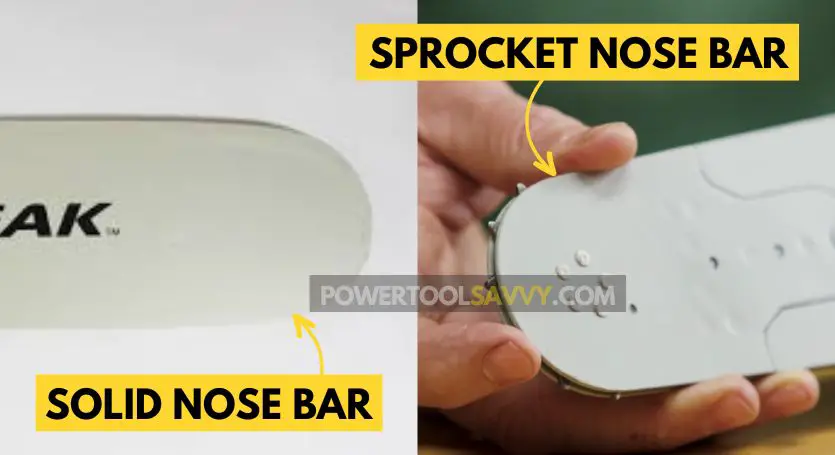
If you have a replaceable nose bar, then it’s an easy fix!
Just swap out the damaged sprocket for a new one. You don’t need to replace the entire bar.
But if you have a solid nose bar, then unfortunately, you’ll have to replace the entire bar once the nose sprocket is damaged.
Your Bar is Missing Some Chunks
Finally, if you find that your bar is missing some chunks or has large cracks, it’s time to replace it.
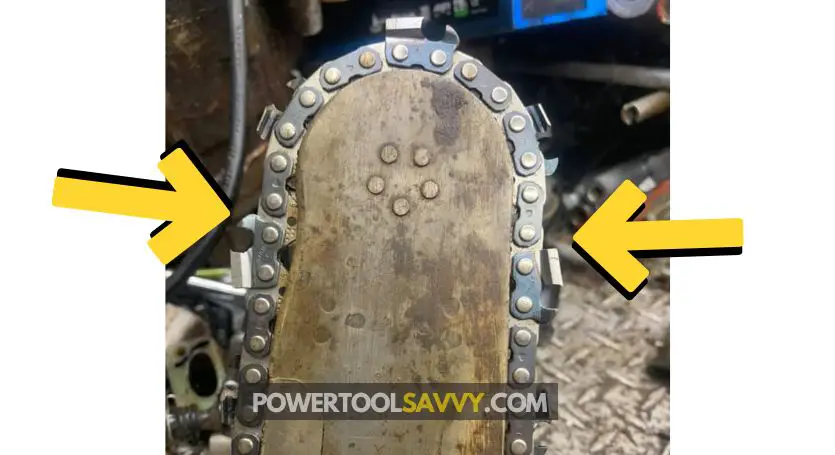
But why does this happen?
Well, it’s usually due to rough use or lack of maintenance.
Also, if you accidentally hit a rock, metal, nail, or other hard object while cutting, it can cause damage to your bar.
When to NOT Replace a Chainsaw Bar
Here are some cases where you can still use your bar without needing to replace it:
Burrs Forming on the Edges
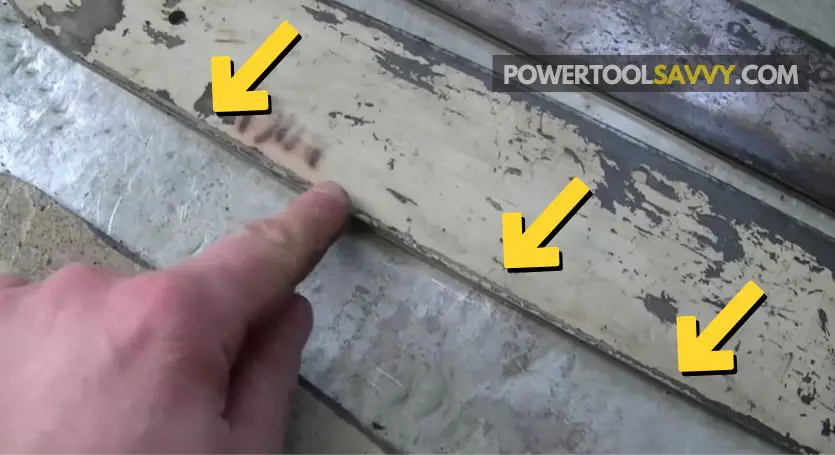
After a year or two of regular use, you might notice some burrs forming around the edges of the bar rails. (It’s also called “knife edging“)
But don’t freak out!
It’s quite normal, and it doesn’t mean you need to replace the bar.
Here are 2 EASY ways to deal with burrs: 
File them down: The first & easiest method is to file down the burrs using a flat file (you can also use a bar rail dresser). This should be done at least once every couple of months to keep your bar in good condition.
Flip the Bar: If burrs form on one side of your bar, simply flip it over and use the other side. This will help distribute wear more evenly & prolong the life of your bar.
The Paint on the Bar is Worn Off
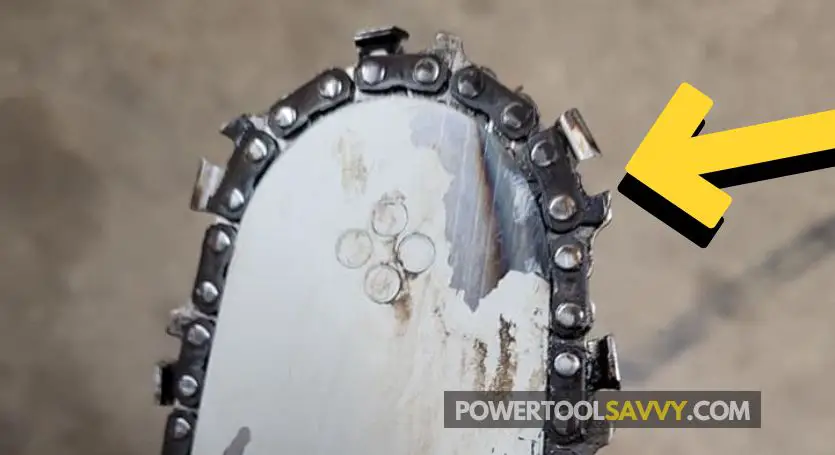
Not kidding!
I’ve seen a lot of people replacing their bars just because the paint has worn off. But here’s the thing – the paint on your bar doesn’t affect its performance.
So unless there are other signs that you need to replace your bar, don’t let worn off paint fool you into spending unnecessary money!
The Bar Turned Blue
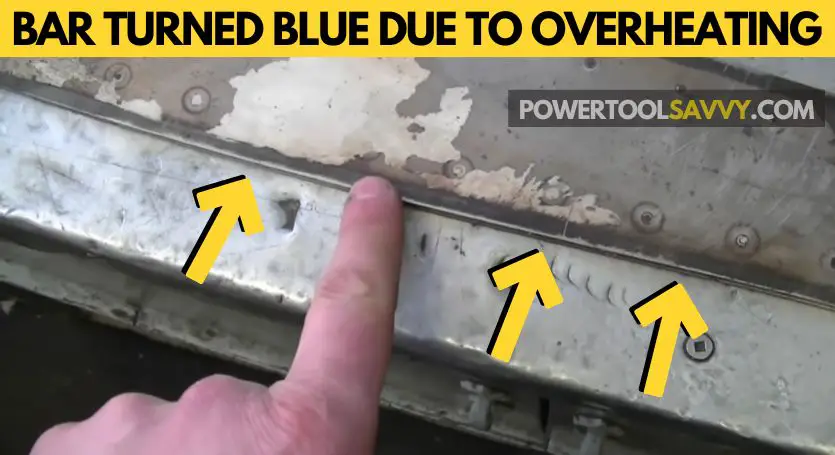
Sometimes you might notice a blue or purple discoloration on your bar (especially on the edges). But that doesn’t mean you need to replace it.
This color change is a result of the heat generated during cutting, and won’t affect the performance of your bar in any way.
Also, some brands heat-treat their bars, which can give them a blue tint right from the factory.
The Bar Rails are Unevenly Worn
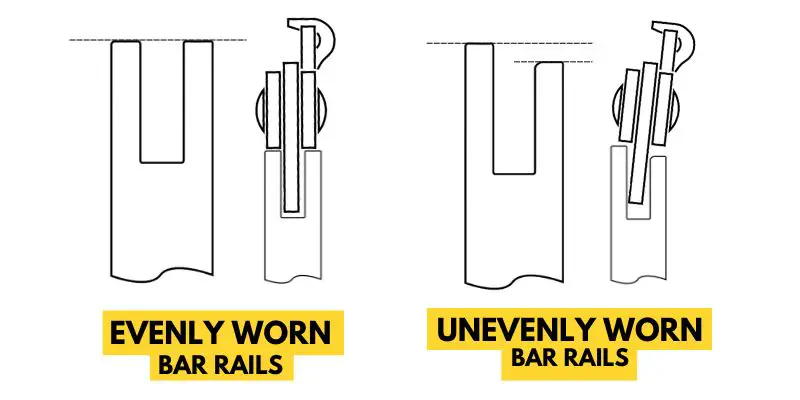
Sometimes, bar rails tend to wear down unevenly. As a result, the chain sits at a slight angle, which can cause issues with cutting.
But there’s an EASY fix for this!
Simply file down the higher rail using a flat file or a bar rail dresser to match the height of the lower one. This will ensure that your chain sits straight, and you can keep using your bar without any problems.
If you don’t want to take on this task yourself, you can also take it to a local small engine repair shop to have them do it for you.
Maintenance Tips to Extend the Lifespan of Your Bar
Chainsaw bars are hella expensive! Nobody wants to fork out money for a new bar every other month.
So here are some maintenance tips that will help extend the life of your chainsaw bar: 👇
Tension Your Chain Correctly
A loose chain can cause a lot of damage to your bar during operation, so make sure you’re always keeping it tensioned.
If you’re not sure how tight is “tight enough”, check out my ultimate guide on how to tension your chainsaw chain.
If you’re in a hurry, watch this video to get a quick idea:
Keep the Bar Groove Clean
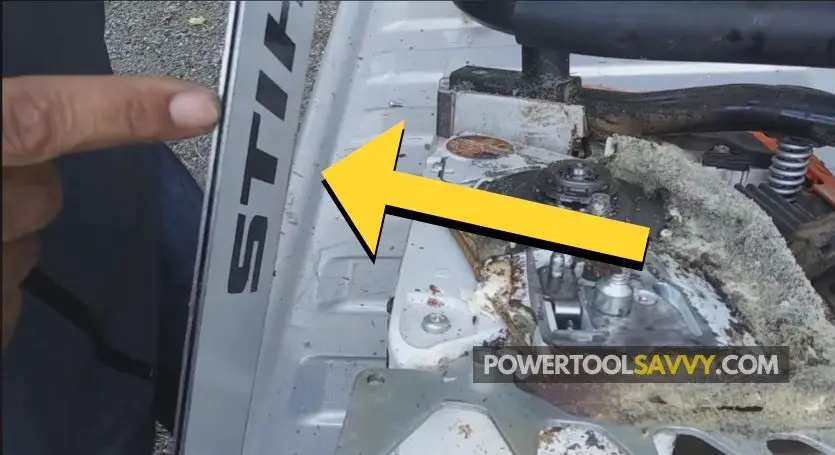
At least once every 15 days, take off the bar & clean out the groove.
Make sure you remove any debris, sawdust, or resin buildup from the rails and groove. This will help prolong the life of your bar by reducing friction & allowing the chain to move freely.
I use this tool called a “chainsaw groove cleaner” (Amazon link) that makes the job super easy!
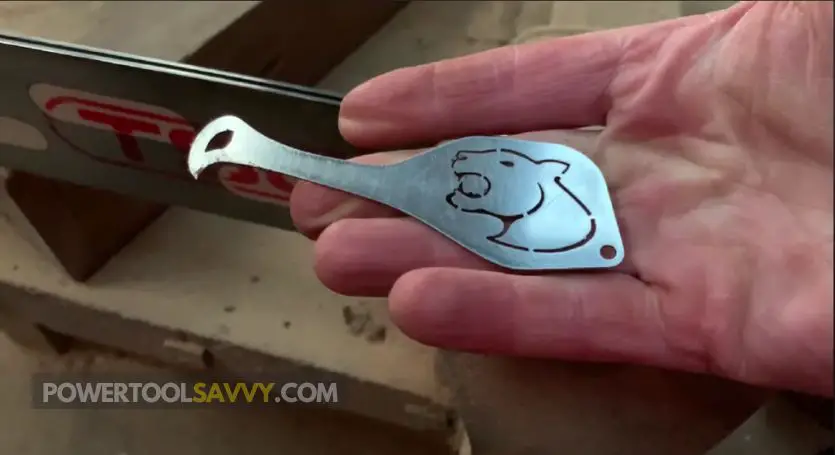
Keep the Oiler Holes Clean
The oiler holes are responsible for lubricating the chain as it rotates around the bar. But over time, these holes can get clogged with sawdust & debris, and hinder the flow of oil.
To prevent this from happening, make sure you clean out the oiler holes at least once every month.
You can use toothpicks or a small screwdriver to gently remove any buildup from the holes.
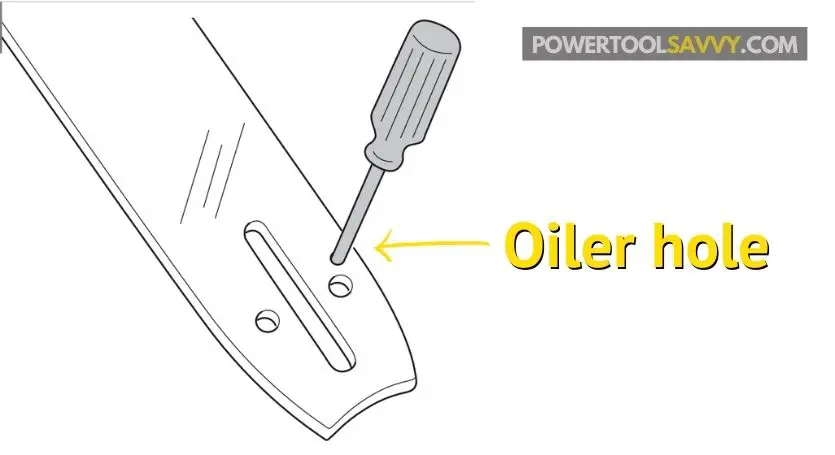
Grease the Nose Sprocket
If you don’t want your nose sprocket to seize up, make sure you grease it. I use this Oregon grease gun (Amazon link) to do the job.
You don’t have to do it very often, maybe once every two weeks (depending on usage).
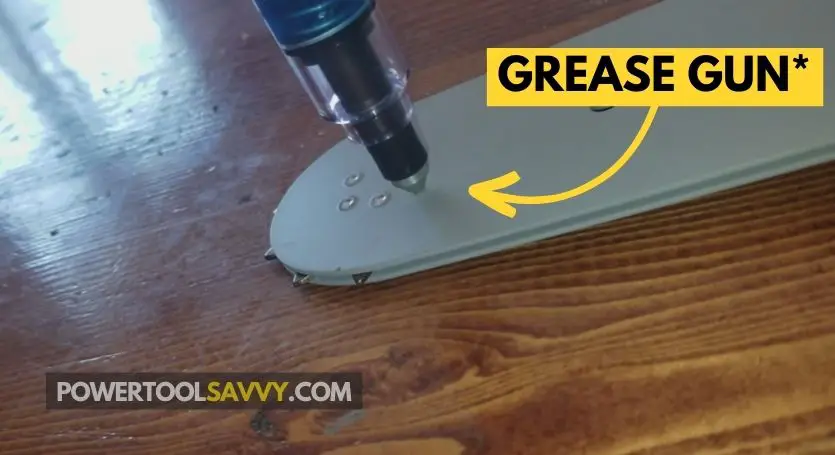

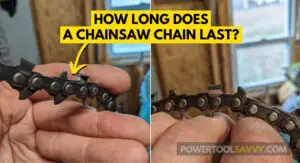
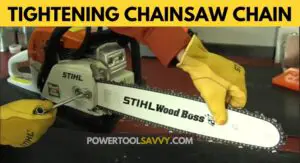
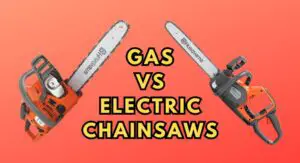
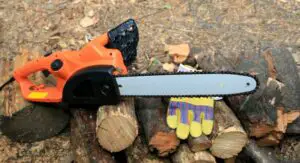
Pingback: Chainsaw Not Oiling the Chain and Bar? Here're 5 EASY Fixes!